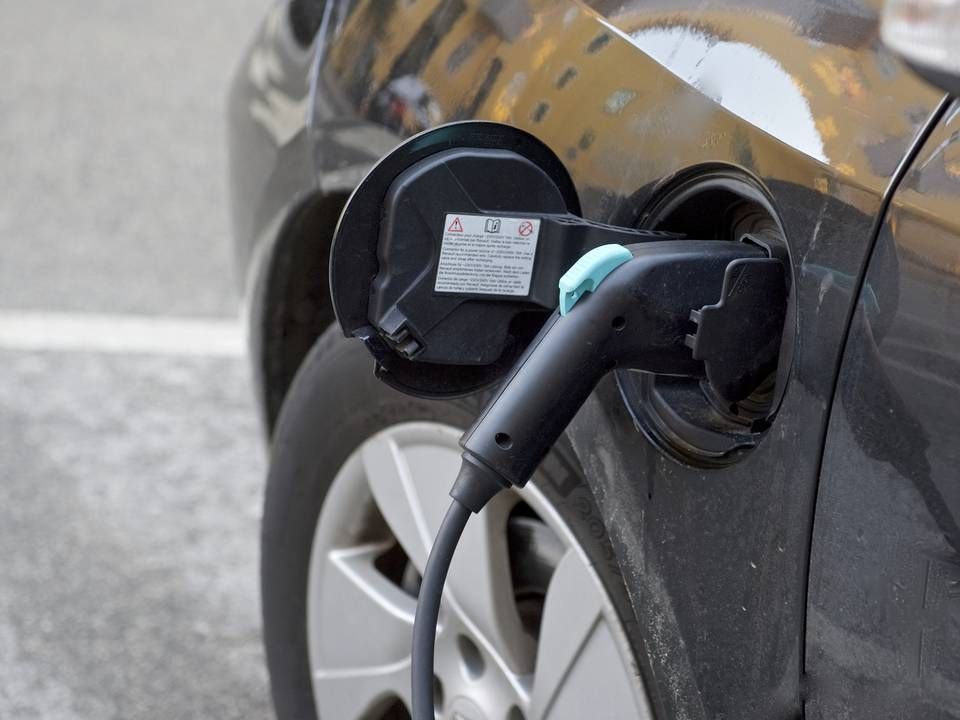Researchers warn against one-eyed focus on EVs

What is the best recipe for mitigating climate change?
A bit of renewable energy mixed with an upgrade to the power grid, sprinkled with electric vehicles and a pinch of energy storage, all baked at 1.5 degrees above the average pre-industrial temperature. Voila!: Green energy transition.
When developments are discussed in reductive terms and buzzwords, they seem very easily achievable. The transport sector in particular faces the risk of this becoming the reality, according to researchers from VTT Technial Research Centre of Finland and the UK's Cambridge Judge Business School.
For a long time, the transport sector has been seen as the Gordian Knot, as there have been few realistic proposals for how to reduce emissions in the sector, which on a global scale accounts about one fifth of CO2 emissions. But with recent years' technological achievements in batteries, the electric car has increasingly been seen as the climate-friendly savior of personal transport.
These developments and accompanying words of praise encouraging more EVs are now scrutinized in a report by Senior Scientist Dr. Ilkka Hannula from VTT and Senior Lecturer Dr. David Reiner from Cambridge Judge Business School.
"It is hard to predict the future. We’re obviously happy to see the breakthrough in the field of electric cars, but I’m at the same time worried, if we’re betting solely on electric cars to solve the challenge in regard to carbon-neutral personal transport. Because if it doesn’t work, then we’re in trouble. We should instead focus on deploying a portfolio of low-carbon technologies. The discussion is quite polarized at the moment, when there are strong views on the one and only right technology," says Hannula, lead author of the study, which investigates the potential of CO2-neutral fuels for personal vehicles.
The idea behind investigating personal cars, according to Hannula, is to pressure-test electricity on the energy form's home turf, as batteries have not been deemed realistic replacements for fossil fuels in aviation or sea transport in the near future.
"Over longer distances, batteries seem to remain as an expensive solution. So we wanted to test batteries on its home turf, which is personal transportation," says Hannula, pointing out that a recent Finnish study demonstrated about 97 percent of all trips in a personal vehicle cover less than 100 kilometers.
Alternatives at longer distances
Hannula and Reiner do not posit conclusions set in stone, as CO2-neutral fuels are still in their technological infancy and haven't seen the same speedy development as batteries in recent years.
Still, there is a lot of potential as regards longer distances, the report shows, comparing different fuel types with an oil price of USD 66 per barrel as a basis. Based on a battery price of USD 200-250 per kWh, the report shows that biofuel, like for instance bioethanol made from US corn, can compete with a short-range EV in the form of Nissan Leaf, model 2016.
Comparing with oil, both the EV and the bioethanol-powered car land at a price of USD 105-132 per barrel, which is double the current oil price.
However, based on the long-range EV model Tesla 3, which covers 540 kilometers, things look different. If the price is converted to an oil baseline, it lands at USD 419-524 per barrel, eight times more expensive than a car running on gasoline or diesel, for instance.
Over long distances, every CO2-neutral fuel – except electrofuels in some cases – can compete with electricity. This is the core of Hannula and Reiner's report, which is to be viewed as a snapshot, in which electricity has already gone through a pricing revolution that hasn't applied to CO2-neutral fuels. And the prices the researchers based the report upon come from small-scale production.
"If you have an EV that drives 540 kilometers between each charge, that's already a very expensive way to reduce carbon emissions in personal transport," Hannula says.
A minefield of challenges
Ending the matter here would make things almost as easy as suggested by the start of this article: EVs for short distances and CO2-neutral fuels like bioethanol and electrofuels for longer distances. Presto: Climate change mitigation.
Things are a bit more nuanced, however.
While the Achilles heel of EVs is distance, the alternatives have no shortage of disadvantages. All CO2-neutral fuels have in common that they're currently more expensive than diesel and gasoline, disregarding support schemes. But the similarities end there.
Hannula and Reiner describe CO2-neutral diesel equivalents like bioethanol as being limited by political resistance, scarce resources and pricing. The barriers to electrofuels, which the fuel sector is betting on as the heir to petroleum, are more interesting.
Electrofuels come in a variety of different forms, but at their core they are the binding of green, electrolysis-source hydrogen and stored carbon. The price is once again a barrier, as electrofuels may be up to ten times more expensive than petroleum, depending on the electricity source. But another problem documented by the report is that, due to the energy-intensive process needed to turn power into fuel, it takes very little for electrofuels to lose their CO2-neutral potential.
"One solution could be to connect the electrofuel production directly to an RE-powerplant. Then the electrofuel would be low-carbon, but it would also tie the fuel production plant to the capacity factor of the power generator," Hannula says.
Currently, the most state-of-the-art wind turbines have a capacity factor of about 50 percent, which means a factory producing electrofuel would in practice be running at half capacity compared to a situation in which it were connected to the power grid.
A more realistic scenario would thus be that the fuel were produced using power from the grid. A comparison of electrical grids shows, however, that carbon emissions grow rapidly in parallel with renewable energy representing a smaller percentage of the grid's energy mix in a given country.
We should pursue any possible road
But Hannula emphasizes once again that the report is not to be seen as a coup de grâce for any specific technology, but on the contrary as underlining that no single technology can render personal transport CO2-neutral.
"Different technologies have different advantages and disadvantages, and they can all be a part of the solution. So instead of aiming, for example, towards 50 percent electric cars, we should aim at reducing emissions from personal transportation by 50 percent. These efforts should be technology-neutral as to whether breakthroughs happen with wood chips, CO2 utilisation or electric vehicles, as long as they meet basic sustainability standards. At this stage, the important thing is to have a wide portfolio where we focus on learning-by-doing and economies of scale," Hannula says.
English Edit: Jonas Sahl Jørgensen
Related articles
World's first car maker goes electric
For subscribers
New report shows EVs closing in on internal combustion cars
For subscribers
























.jpg&w=384&q=75)